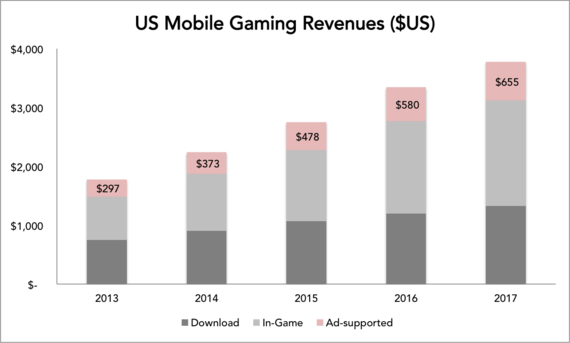Video games have come a long way since atari and the players have gone even further. Gamers are no longer obscure beings in dark basements with Cheetos crusted on the controls. Forgotten is the Nintendo Power Glove, an early wearable that excited, yet confused both millennials and Gen Ys. That's not to say that videogames have lost their appeal. Games and gamers alike have simply evolved.
"I know all the games you play because I play them too."
-George Michael (Faith, 1987)
It used to be that games were played on consoles, using cartridges purchased in real brick-and-mortar stores. These early devices were silos without internet connection and their absence became a form of punishment if you didn't do your chores. Today, games are available for free, anytime, anywhere. Now, the only punishment is viewing the banner that distracted you from Clashing Clans.
In the last decade, the gamescape has changed dramatically. Mobile games are on the verge of taking over consoles as the preferred choice of play because they're more convenient by default. As a result, light/medium mobile gamers are playing on their devices longer than console gamers. Although the graphics and screen size may not be as epic as a console, mobile games have demonstrated to be just as fun on the run.
The transition from consoles to mobile gaming can be attributed to Moore's Law. Mobile devices now have more processing power than what it took to land on the moon. This has enabled even the most casual gamer to virtually land on many moons in galaxies far, far away.
The portability of mobile has also extended session times, especially with games. In fact, 1 in 3 minutes spent on a mobile is game play. Mobile games are a fun way to kill time, whether it's on the bus, in the waiting room, and during conference calls. (Yes, we know you crush candies on mute.) Mobile gamers are massaging mobiles with their thumbs during lulls throughout the day. Nobody schedules time to play games, so mobile ads are also a great time to distract from the distraction.
The Gamer is Everyone. The Gamer is Everywhere.
Gamers rule mobile. According to eMarketer, half of US mobile users play games, and US mobile gaming revenues are in the warp zone to double in 2017.
The explicit nature of videogames caused a stir with main street in the 1990s, when its controversial content was under review at a Senate hearing. At the center of focus were young gamers, branded unfairly as highly influential individuals who had violent tendencies.
It may come as no surprise that millennials and Android gamers are the most active mobile gamers, but Generation Xs and iOS users are more likely to pay to play. The fact that 63 percent of millennials do not have credit cards is likely reason for the gap.
Contrary to popular belief, females are not gaming noobs. According to eMarketer, women average 2.64 monthly downloads, whereas men average 2.92. Both genders share one common trait: short attention spans with only 24 percent of customers using games after three months for both Android & iOS users.
The Holy Grail for Publishers.
Understanding gamers has become increasingly more important for publishers as adblockers have risen in popularity and many gamers have learned to ignore ads. As a result, new techniques such as Programmatic App Mediation have been adapted for mobile as a method to display ads that appeal to gamers' interests and habits, while optimizing fill rates for publishers ad inventory. This new, but effective tool has been rapidly growing triple digits percentages (234 percent in 2014 and 110 percent in 2015) in the last two years.
Mobile advertising isn't inherently intrusive; ads simply appear at the wrong place at the wrong time. Knowing how to entice gamers is challenging but can be as rewarding as crushing candy.


